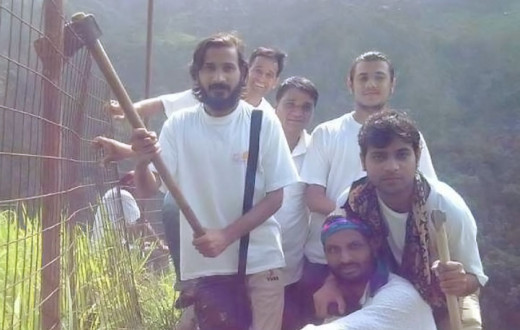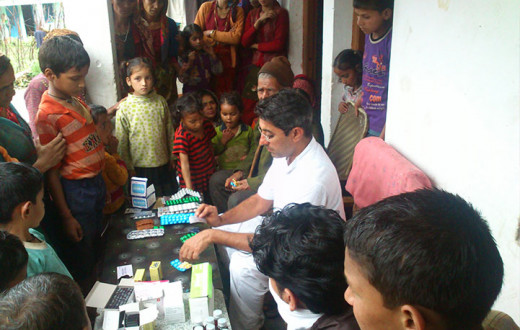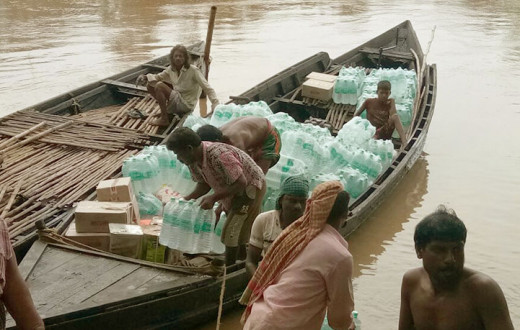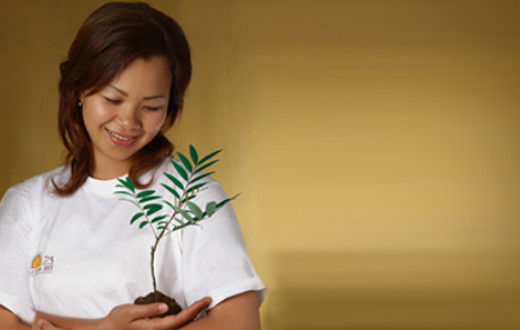When 38-year-old Surya Murthy speaks, you listen. And wonder. Wonder at the indomitable spirit of a human being who can stand in the face of a tsunami—a calamity—literally. "When the Tsunami came on December 25, 2004, it took everything from us. I was in a traumatic state and it was difficult to cope with our loss," he shares. The avalanche of rolling waves struck the south coastal region of India, forever changing the lives of Surya and thousands of others.
Government reports stated that 10,000 people lost their lives; an estimated 2,726,596 people were affected in this natural disaster; over 5000 persons were believed to have gone missing. The tsunami, whose gigantic proportions were never seen or heard of before, left a gaping trail of wreckage of life, significantly in coastal districts like Cuddalore, Nagapattinam, Nagercoil, and Kanyakumari. According to a report, 1500 children lost a parent in the family and 117 were orphaned in Nagapattinam itself.
With the landscape suddenly having disappeared, the need for immediate rehabilitation was stark. Yet the wreckage that was caused in a few hours took several months to build back. And so did getting back to the momentum of a life that once was. And for people like Surya, life began from scratch again. It was a long and arduous journey that 300 volunteers of the Art of Living foundation and its sister organization, the International Association of Human Values (IAHV), took on with the tsunami-affected villagers.
First came immediate relief like materiel and temporary makeshift arrangements. Psychological healing through counselingand techniques like meditation and the Sudarshan Kriya eased the memories and sense of loss.
As the emotional fog cleared towards a future of hope and strength, the physical fissures in the environment began to get filled in. It was after more than a year—August 2006—that construction of 94 houses were completed in the Periamanikapangu village of Tharangambadi, in north Nagapattinam by International Association for Human Values in association with Times Foundation. These houses were built in situ of their existing houses which were destroyed due to tsunami. Not only they were given free houses. They also benefited by way of wage for working to build their own houses.
Despite facing insurmountable challenges in an area that had just witnessed the ravages of a deadly tsunami came up one-storey houses. The landscape changed again. Though it took time and there were challenges to surmount, volunteers, along with construction experts, gave it their all. As Surya saw the houses coming up, he was hopeful and felt a sense of revival. Yet, the day when Surya was given a house, he choked. "Having a house gives me a sense of security, and for that I am very grateful," is all he could say. His expression spoke volumes—his new home stood in the exact location where his old home once did.
And like him, other beneficiaries had houses insured in their names. It was more than a dream come true. "After the Tsunami, my mental and financial condition was such that I couldn't even have rebuilt my hut after it got destroyed," shares 52-year-old Palaniswami. "Now I'm living in a 'pakka' (concrete) house! Moreover, the Art of Living gave me a painter's job for this house, from which I earned money as well. That gave me a new purpose and things to look forward to."
With a stable home came other amenities that led to the same quality of life that these residents had earlier. Children now had schools to go to, vocational training centers brought back a sense of confidence and skill to tackle life, and a community center helped the villagers bond again. Not in grief this time, but in joy and renewed hope.
Taking life's course in their hands
A unique initiative saw the construction of 10 houses in Kallimedu village, Nagapattinam, by the residents themselves, bringing a sense of self-worth among the villagers.
A brick kiln was set up, where villagers were taught the art of making bricks. Experts further assisted them in the process of construction. A collaboration between the IAHV and the LAFTI (Land for Tiller's Freedom, which provides land to people) saw to it that the project was a heart-warming success.











